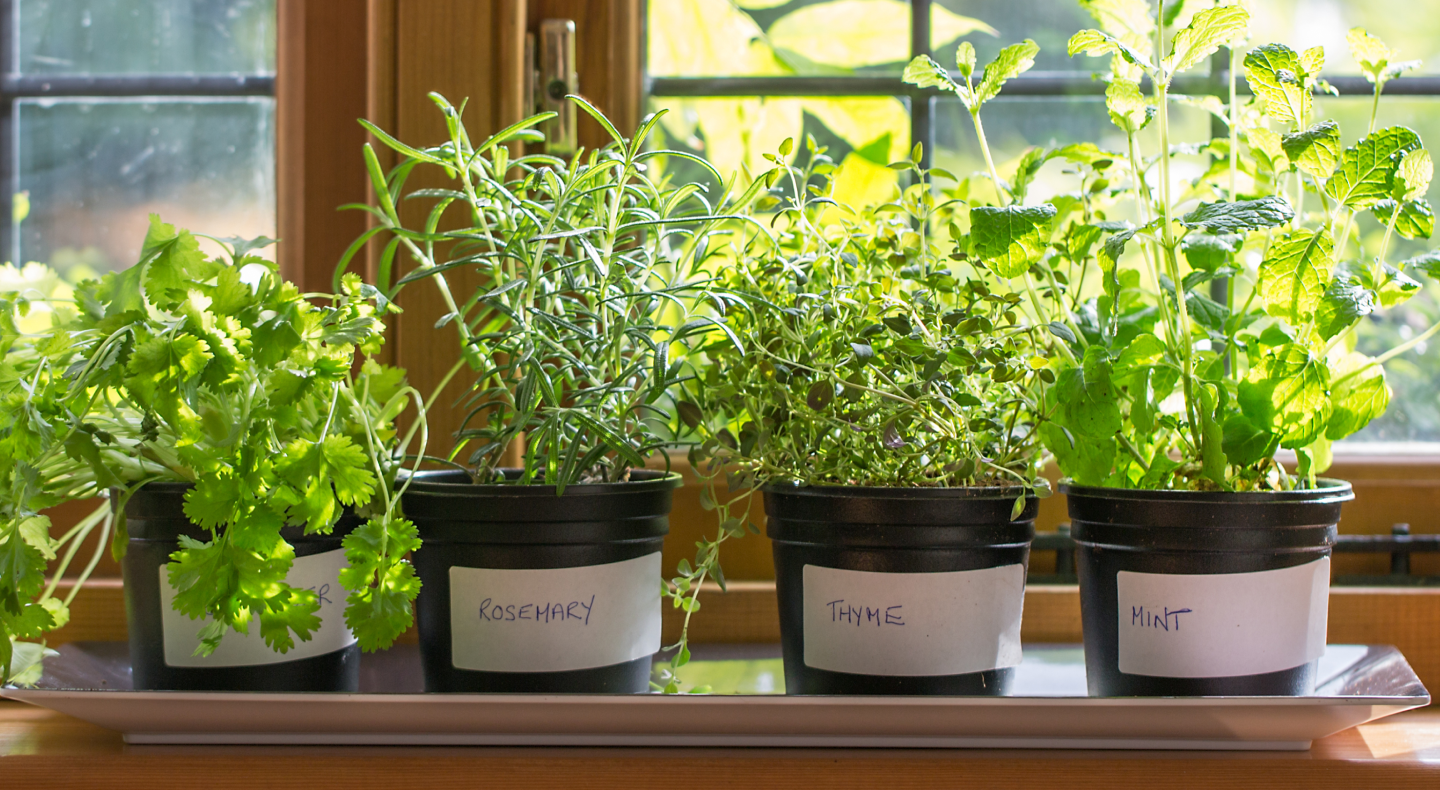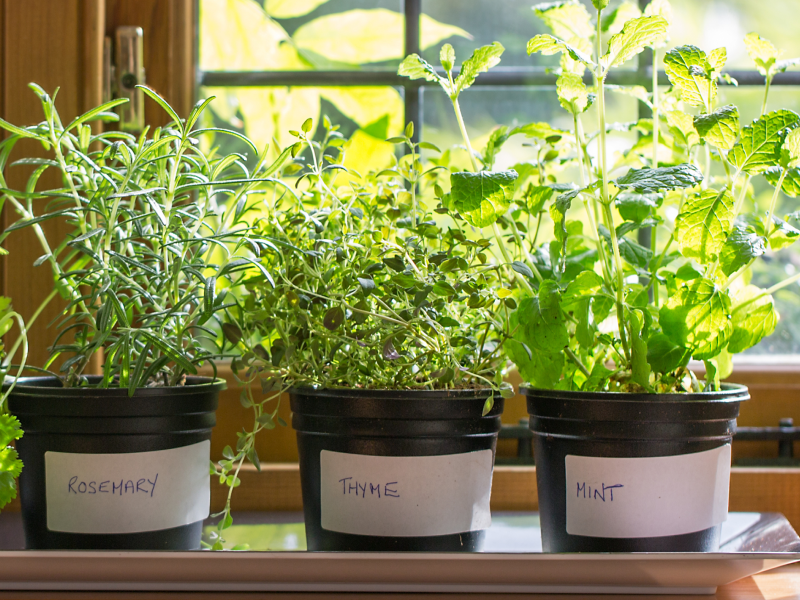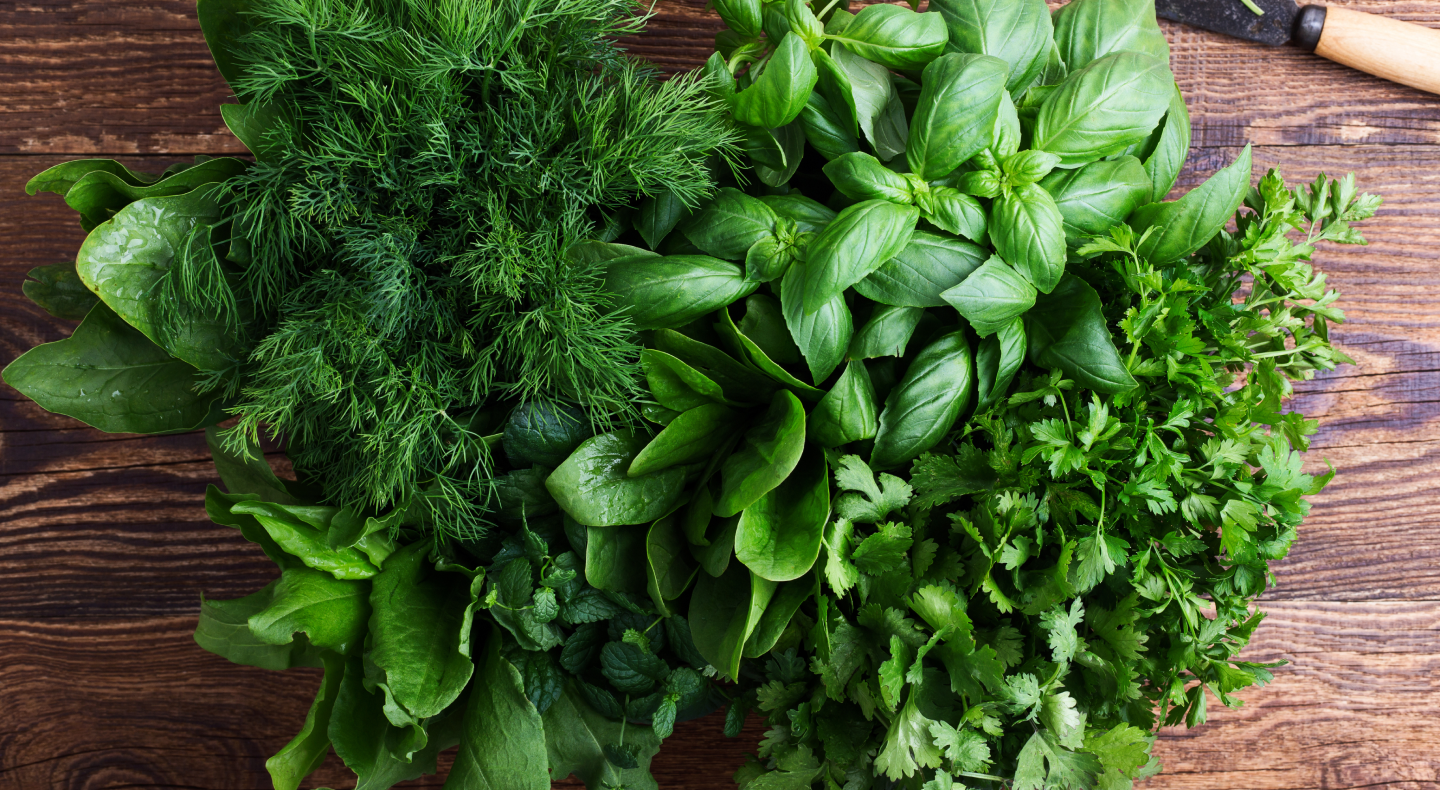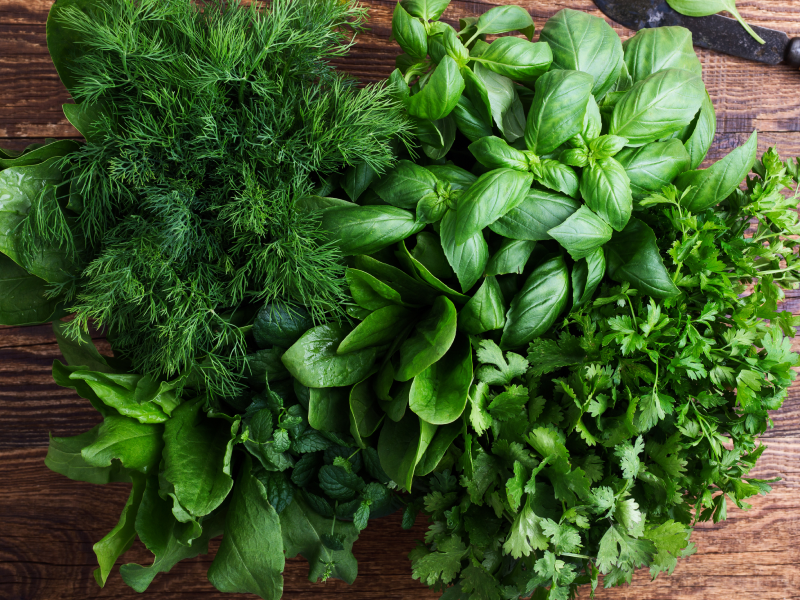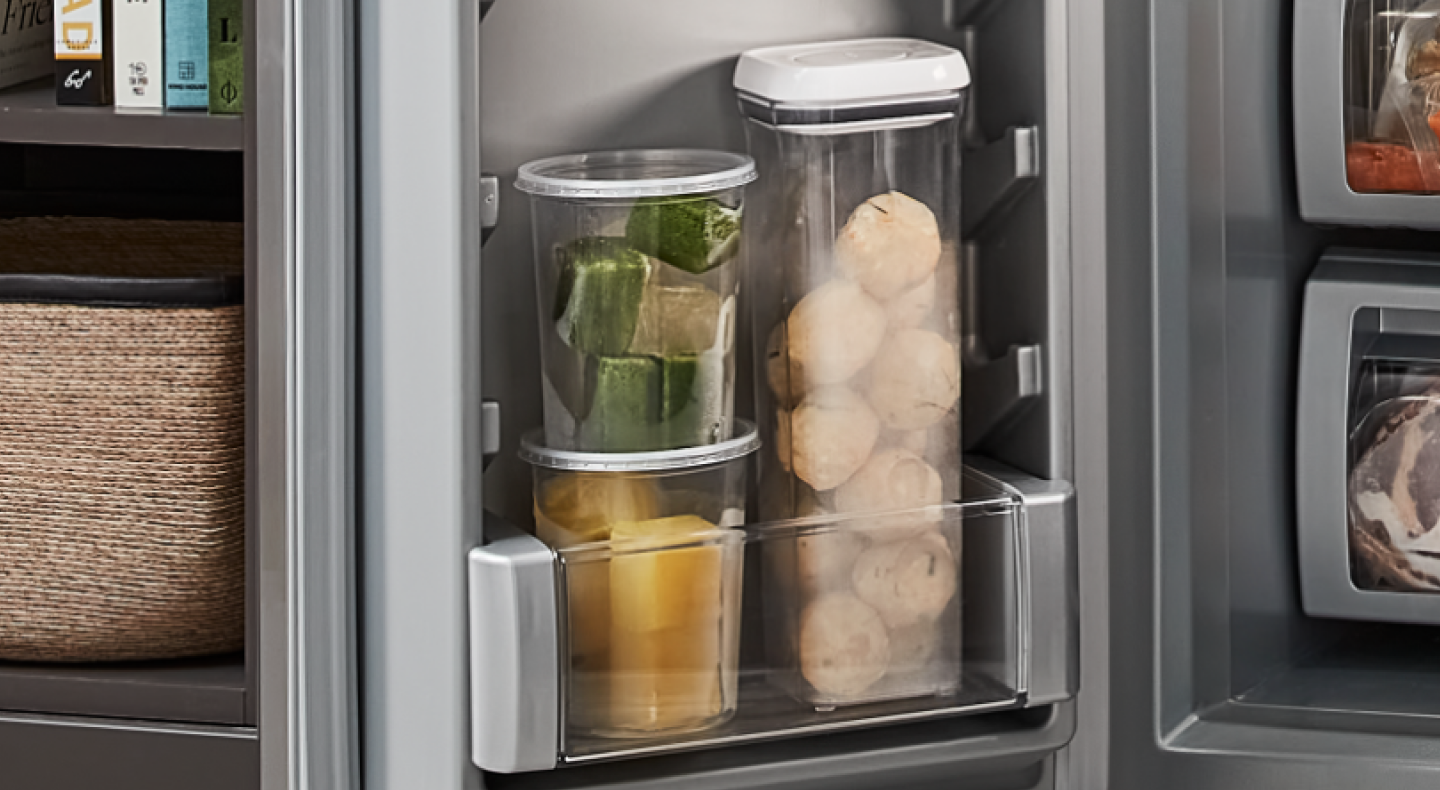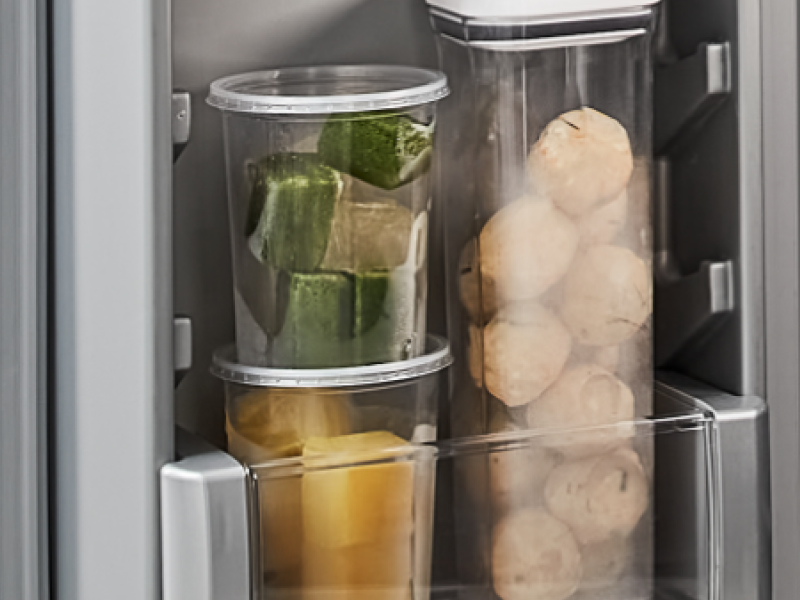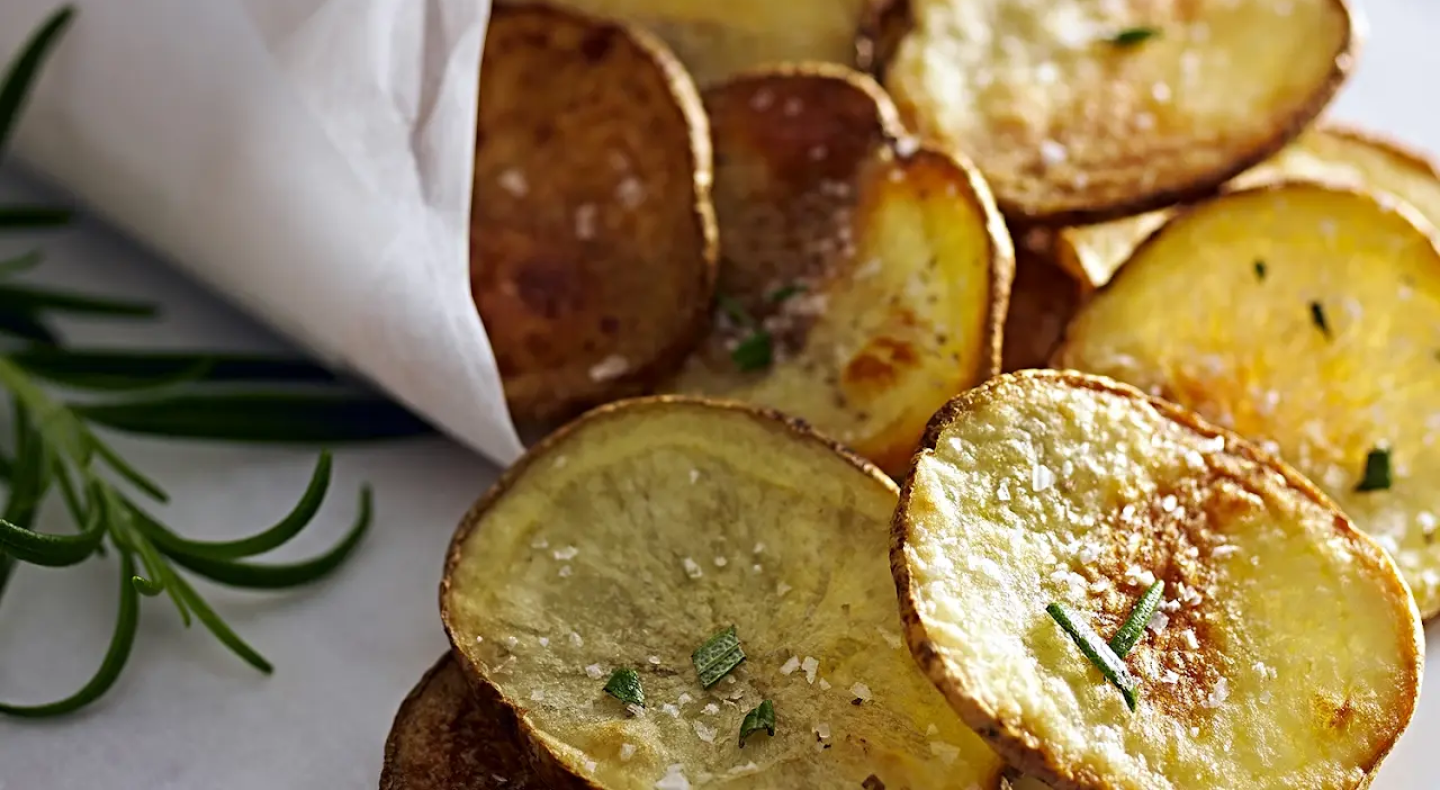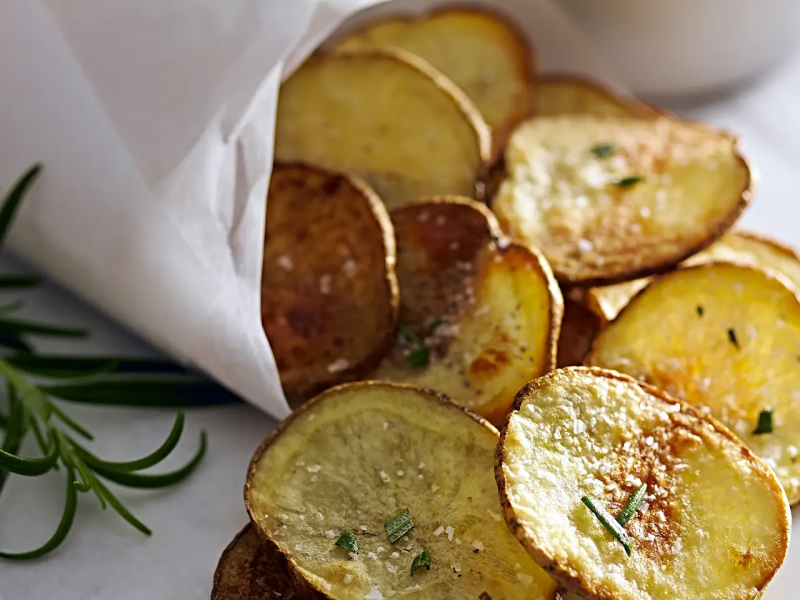
HOW TO STORE FRESH HERBS IN THE FRIDGE OR FREEZER
Having fresh herbs at your fingertips can be a great way to fuel creativity in the kitchen, but how do you keep herbs fresh so they last? Use the links below to discover more about the differences in storing tender and woody herbs, including how to clean them and how long they will last when properly stored.
THE KEY TO PROPER FRESH HERB STORAGE: TENDER AND WOODY HERBS
Knowing the difference between tender and woody herbs will help determine the proper way to store your herbs.
The essential difference is in the stem. All fresh herbs have fragrant leaves that live on stems. Tender herbs, like basil and cilantro, have soft, choppable leaves and grasslike stems while hard herbs, like rosemary and thyme, often have firmer leaves and stiff, woody stems that are not typically eaten.
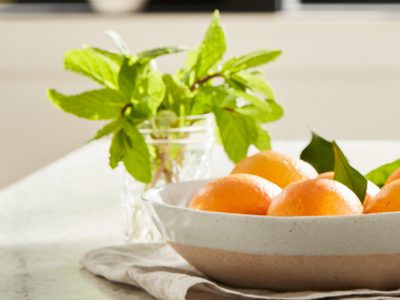
TYPES OF TENDER HERBS
Tender herbs often have a more delicate flavor than their woody counterparts and they’re typically used fresh or added to a dish right at the end of cooking to preserve their more subtle flavors. Tender herbs can easily make a bright, fresh, herbaceous sauce like a pesto or a chimichurri just by adding them with a few other pantry-pull items to a food processor for a quick blitz.
PARSLEY (FLAT OR CURLY)
CILANTRO
MINT
BASIL
DILL
CHIVES
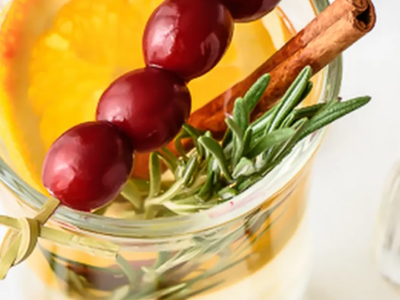
TYPES OF WOODY HERBS
These herbs are often stronger in flavor and are commonly cooked into dishes to infuse flavor in recipes. Because they’re bold in taste, they’re perfect for braising, roasting or adding to oils for a fragrant and flavorful infusion.
ROSEMARY
THYME
SAGE
OREGANO
MARJORAM

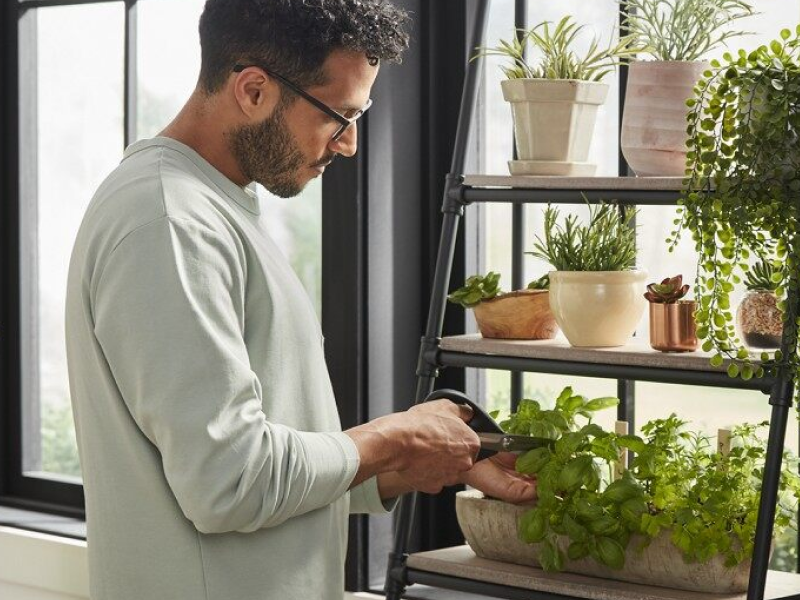
What Are the Best Herbs to Grow at Home?
Growing herbs at home ensures that you are using the freshest ingredients whenever you are creating or making in your kitchen. Parsley, rosemary, mint, basil, chives, thyme, lavender and oregano are low-maintenance herbs that can easily be grown at home with the right care.
HOW TO WASH AND DRY HERBS
Whether you’re bringing herbs home from the store or plucking them from the garden, it’s important to wash and dry them properly to remove dirt and decay-causing bacteria.
Treat tender herbs like a bouquet of fresh flowers, handle with care and place them in a container filled with a little water. Woody herbs can be rolled in a damp paper towel and placed in a plastic bag to store.
Step 1: Wash Herbs with Cool Water
Always wash your herbs with cool water. There are several methods for washing, including simply running them under the kitchen faucet, but because they can be more delicate consider immersing tender herbs in a bowl of cool, fresh water.
Step 2: Rinse Again in a Second Bowl of Water
Let the dirt settle to the bottom of the bowl, then rinse again in a second bowl of clean water. Hardier herbs can stand up to a little more “wear and tear“ so go ahead and give them a spin in a salad spinner.
Step 3: Dry Herbs Thoroughly
After the herbs have been properly washed, make sure they’re thoroughly dried. Give them a few shakes then lay them in a single layer on paper towels or a clean kitchen towel and cover with another layer of towels to absorb any remaining moisture.
HOW TO STORE CILANTRO AND OTHER TENDER HERBS IN THE FRIDGE
You can store clean tender herbs in a mason jar or a deli container on a lower shelf in your fridge. Simply snip off the ends as you would any fresh flower and place in about an inch of water. Cover the herbs with a plastic bag or the deli container lid to keep oxygen out and freshen the water when it starts to look cloudy. Stored this way, your tender herbs should be good to go for up to three weeks.
SIX SIMPLE STEPS FOR STORING TENDER HERBS
Wash and dry herbs
Snip ends and remove any brown or discolored leaves
Place upright in a container with enough water to cover the ends of the stems but not deep enough to submerge the leaves.
Cover with plastic bag or lid
Store on lower shelf in your refrigerator
Replace water every few days
Tip: How to Store Fresh Basil
Basil is a bit of an outlier as far as tender herbs go; its leaves will turn black if they get too cold. Follow all of the proposed steps for storing tender herbs with the exception of step 5. This herb thrives in warm conditions so place your basil bouquet at room temperature, out of direct sunlight.

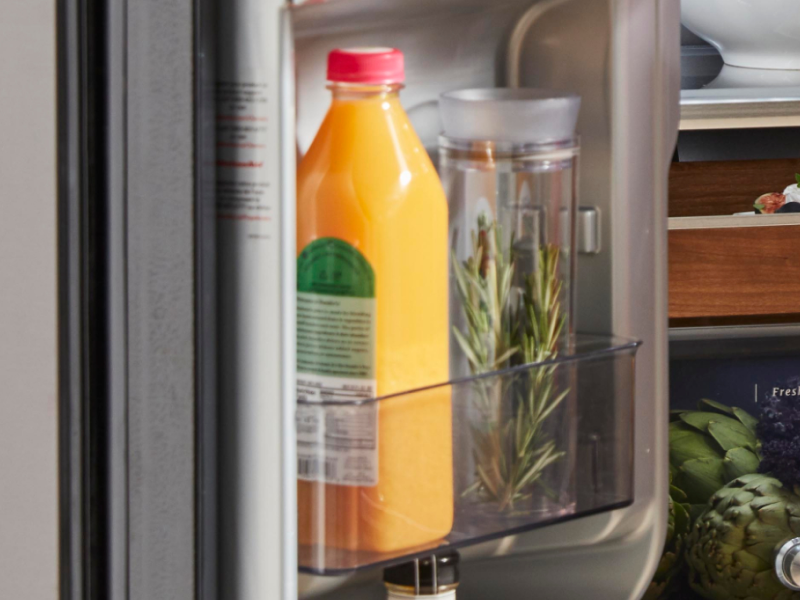
HOW TO STORE ROSEMARY AND OTHER WOODY HERBS IN THE FRIDGE
After you’ve cleaned and dried your woody herbs, simply dampen a paper towel or cheese cloth and roll your herbs up like a burrito and tuck them in a plastic bag or plastic container to keep out decay-producing oxygen. Woody herbs can typically be kept fresh stored like this in your crisper drawer for 2–3 weeks.
SIX SIMPLE STEPS FOR STORING WOODY HERBS
- Wash and dry herbs
Remove any brown or discolored leaves
Roll herbs in damp paper towel
Place in plastic bag or sealed plastic container
Store in crisper drawer in refrigerator
Re-wet paper towels when towel begins to dry out
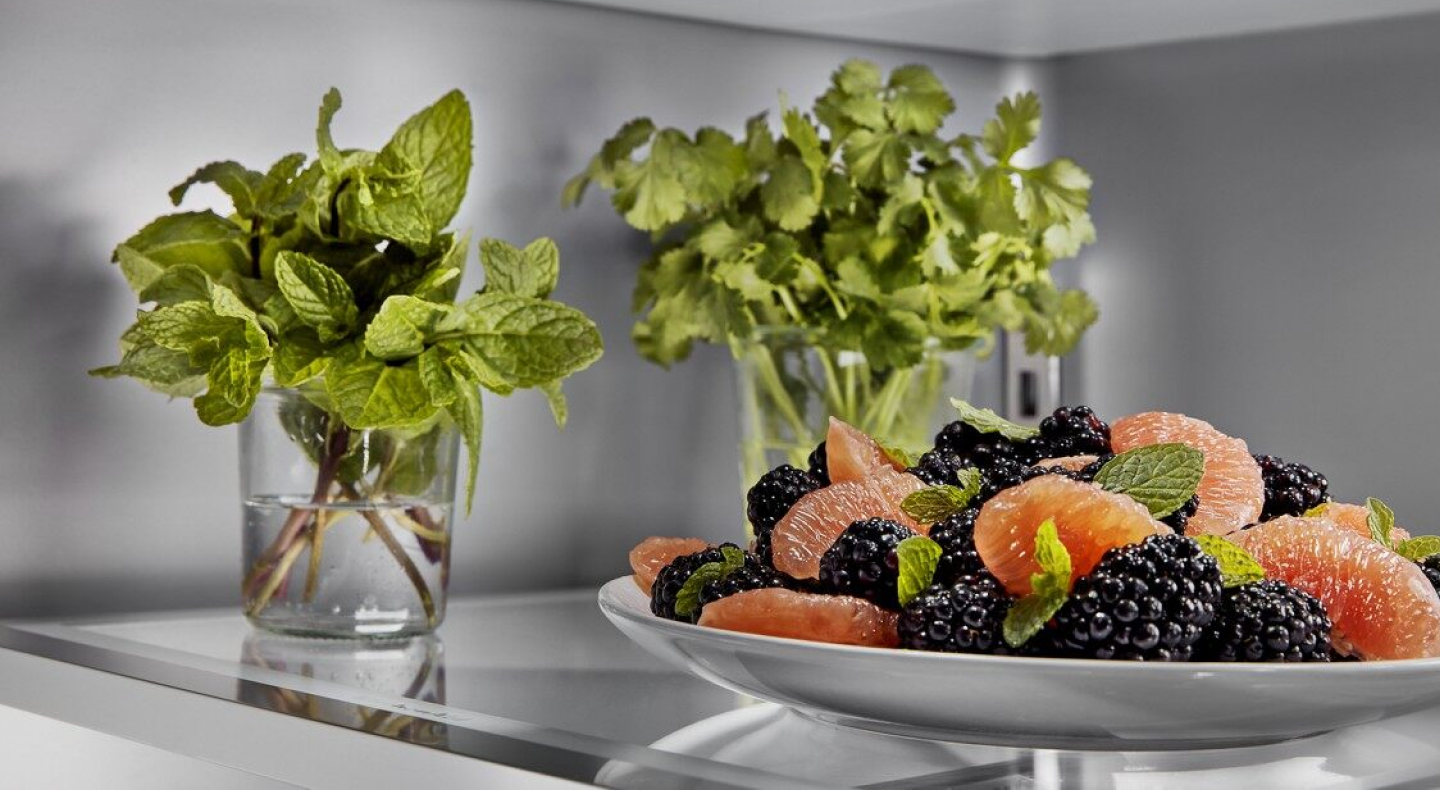
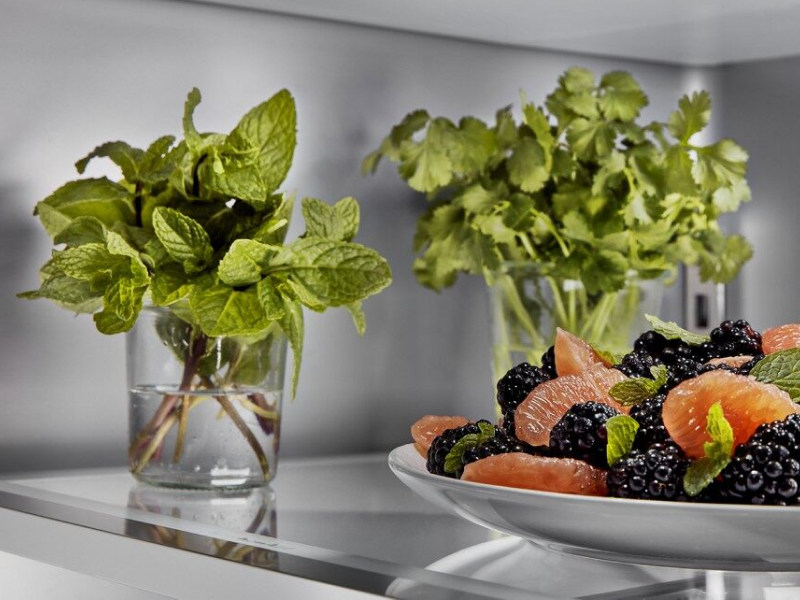
WHERE SHOULD I STORE FRESH HERBS IN THE FRIDGE?
Fresh herbs, with the exception of basil, like cool air so store tender herb containers on a lower shelf where air is coolest and the herbs can stand upright without obstruction. Woody herbs keep best in crisper drawers. Be sure to clean your refrigerator drawers and shelves regularly to help keep them in good shape for herb storage.
KitchenAid brand offers refrigerators specially designed to help keep your produce at the peak of freshness and some models even come equipped with an Herb Tender® Container. Simply fill this cylindrical container with a little water and place your tender herbs upright in it for easy, flexible storage. And be sure to shop KitchenAid® refrigerators with solutions for fresh food organization for inspiration on extending the life of produce and more.
How to Store Herbs in the Freezer
Maybe you’ve got a bumper crop of mint this year or you won’t be able to use up all the basil you bought at the farmer’s market. Freezing is a great way to make sure you have herbs on hand year round and proper freezer storage can extend the life of your herbs for up to a year.
Make frozen herbs easier to use when you’re ready to cook by portioning them out in ice trays. Simply chop a tablespoon or two of herbs and freeze them in water or olive oil in your ice tray. By freezing them in oil you’ve got a perfect addition to a sauce or a soup. If you’re freezing them in water, just allow the ice to melt and soak up any extra liquid with a paper towel then use your herbs like you would any other fresh herb. If you don’t have an ice tray, a plastic bag works too.
Woody herbs can also be stored in the freezer whole, the same way you would store them in the fridge, just wrap them in a paper towel and seal in a plastic bag.
SIX SIMPLE STEPS FOR STORING HERBS IN THE FREEZER
- Wash and dry herbs
Remove any brown or discolored leaves
Chop herbs into one or two tablespoon portions
Place chopped herbs in ice tray or plastic freezer bag
Fill tray or bag with water or olive oil
Freeze for up to a year
Best Uses of Fresh Herbs
Fresh herbs add an elevated taste to a variety of recipes. Muddle herbs for homemade cocktails at your next party, blend fresh parsley into an herbaceous soup or garnish bruschetta with mint leaves.
Consider using fresh rosemary for a flavorful twist to baked potato chips or add depth to an apple tart by incorporating fresh thyme. If you find yourself with a large amount of fresh herbs on hand, whip up a homemade pesto and add it to grilled meats, pasta or veggies for a punch of flavor.
How Long Do Stored Herbs Last?
Fresh herbs can last anywhere from 1-3 weeks in the fridge and up to a year in the freezer when stored properly.
Having fresh herbs at your fingertips can be a great way to fuel creativity in the kitchen, but how do you keep herbs fresh so they last? Discover more about the differences in storing tender and woody herbs, including how to clean them and how long they will last when properly stored.
Here is a quick snapshot of some popular herbs, tender and woody, and their average “lifespans” in the fridge:
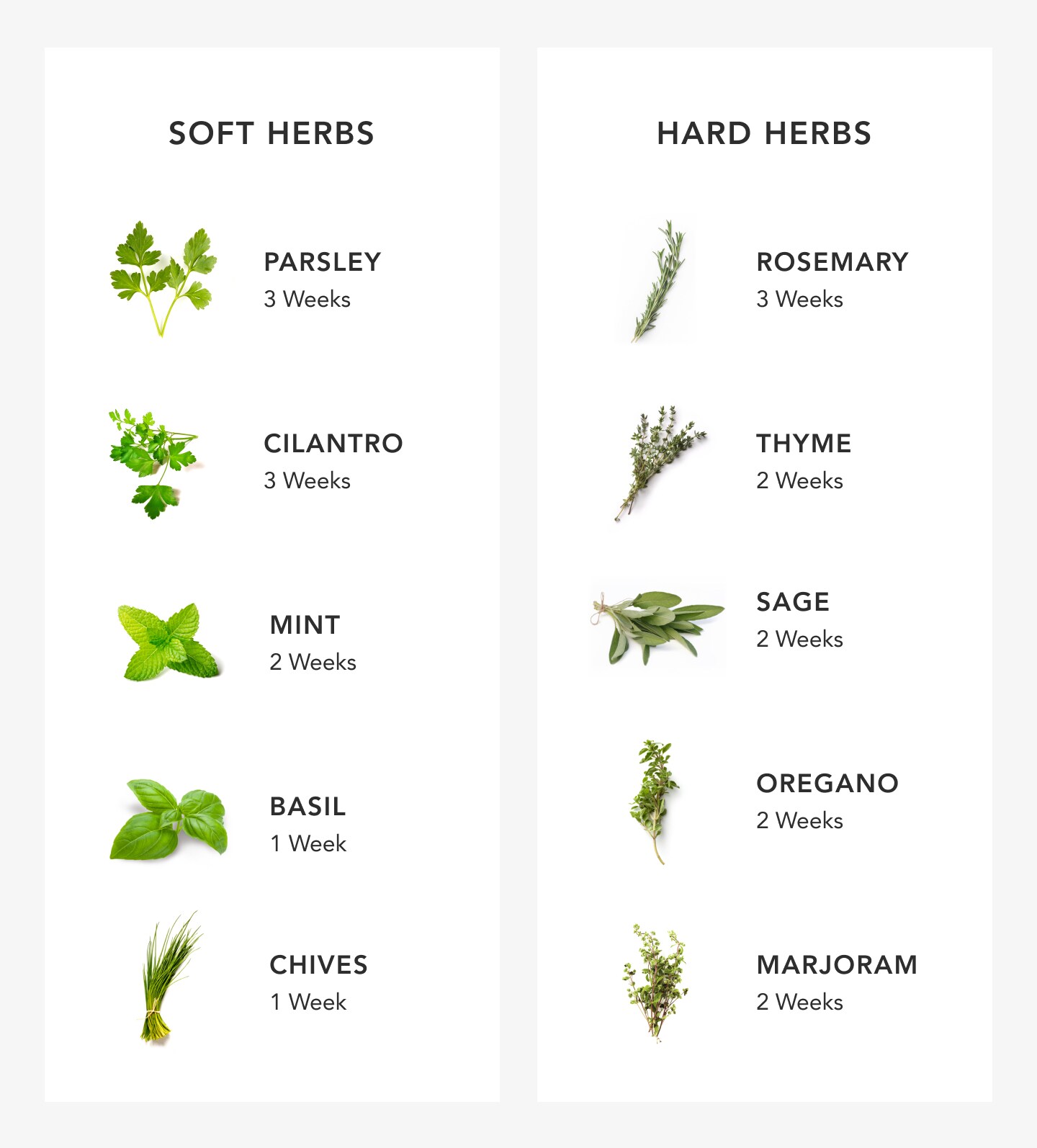

Shop KitchenAid® Food Processors and Choppers
Make recipe preparation easy with KitchenAid® food processors and choppers that help you take control of chopping, dicing, mincing and slicing so you can focus more on making. Browse the entire collection of processors and choppers and embrace effortless creativity.
